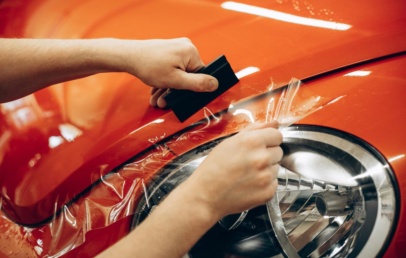Introduction
Car detailing is an intricate art that goes beyond merely cleaning the surface; it involves restoring the vehicle’s beauty and safeguarding its appearance for years to come. One essential yet often overlooked aspect of car detailing is iron decontamination. In this blog, we delve into the science behind iron decontamination, exploring its necessity, technical aspects, and the numerous benefits it brings to automotive surfaces.
Understanding Iron Decontamination
Iron decontamination is a process designed to remove ferrous iron particles and contaminants that bond to the vehicle’s surfaces. These iron particles originate from various sources, including brake dust, rail and industrial fallout, and environmental pollutants like road debris and air pollution. When these iron particles come into contact with a vehicle’s surfaces, they bond with the paintwork, causing potential damage and compromising its appearance.
The Necessity of Iron Decontamination
1. Corrosion Prevention:
Iron particles that embed themselves on the vehicle’s surface can lead to corrosion over time. When iron reacts with oxygen and moisture in the air, it forms iron oxide, commonly known as rust. This rust can penetrate the clear coat and the underlying layers of paint, causing small rust spots that weaken the paint’s integrity. Iron decontamination is vital to prevent corrosion, preserving the vehicle’s paint and extending its lifespan.
2. Surface Smoothness and Preparation:
Iron particles create a rough and contaminated surface, making paint correction and other detailing procedures challenging. Before paint correction or wax application, detailers must ensure a smooth surface for precise and flawless results. Iron decontamination smoothens the surface, improving paint correction accuracy, and creating a pristine canvas for protective coatings.
3. Enhanced Paintwork Clarity and Gloss:
Iron particles accumulate on the paint’s surface, creating a layer of embedded contaminants that dull the paint’s shine and clarity. Iron decontamination removes these contaminants, restoring the vibrant gloss and visual appeal of the paint.
4. Improved Bonding of Protective Coatings:
For protective coatings like ceramic coatings or sealants to adhere effectively, the paint surface must be free from contaminants. Iron decontamination ensures a clean and contaminant-free surface, maximizing the bonding capacity of protective coatings and prolonging their longevity.
The Technical Process of Iron Decontamination
Iron decontamination involves the use of specialized iron removers or iron fallout removers. These products contain active chemicals that dissolve and neutralize iron particles, breaking their bond with the vehicle’s surface. The process involves the following steps:
1. Application: Iron remover is sprayed onto the vehicle’s surface, targeting areas with visible iron contamination.
2. Color-Changing Reaction: Upon contact with iron particles, the iron remover undergoes a chemical reaction, turning the iron particles into a purple or reddish color.
3. Dissolving Iron Particles: As the iron particles are chemically dissolved, they become loosened from the surface.
4. Rinse-off: After a few minutes, the surface is thoroughly rinsed, washing away the dissolved iron particles and contaminants.
Conclusion
In the world of car detailing, iron decontamination is not merely an optional step, but an indispensable part of the process. Understanding the science behind iron decontamination reveals its necessity in preserving the vehicle’s beauty and protecting its surfaces. By incorporating iron decontamination into their detailing routines, professionals ensure the longevity of the paintwork and deliver exceptional results that stand the test of time. Embrace the technicality of iron decontamination, and elevate your car detailing craft to new heights, safeguarding automotive surfaces for years of pristine brilliance.
Disclaimer : The content provided on this blog by Torquoholic is intended for informational purposes only. The views and opinions expressed herein are those of the individual authors and do not necessarily reflect the official policy or position of Torquoholic as a whole. Some content posted on this blog is created by Torquoholic's team, while other content is derived from various sources on the internet, books, discussions, and knowledge sharing by industry professionals. While we strive to ensure the accuracy and reliability of the information provided, we cannot guarantee its completeness or timeliness. The information presented on this blog is based on our personal research and understanding of the topic at hand. It should not be interpreted as a comprehensive education on the subject matter. Readers are encouraged to conduct their own research and consult with relevant professionals for specific advice or information. Torquoholic shall not be held liable for any errors, omissions, or inaccuracies in the content provided on this blog, nor for any actions taken in reliance thereon. We disclaim any responsibility for the content of external websites linked to from this blog. By accessing and using this blog, you agree to indemnify and hold Torquoholic and its authors harmless from any claims, damages, or losses arising from your use of the information provided herein. Thank you for your understanding and continued support.




